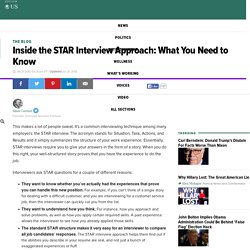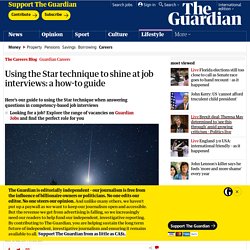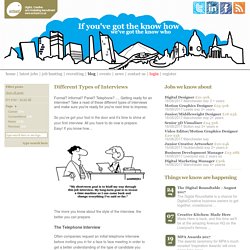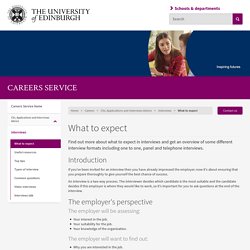

Inside the STAR Interview Approach: What You Need to Know. This makes a lot of people sweat.

It’s a common interviewing technique among many employers: the STAR interview. The acronym stands for Situation, Task, Actions, and Results and it simply summarizes the structure of your work experience. Essentially, STAR interviews require you to give your answers in the form of a story. When you do this right, your well-structured story proves that you have the experience to do the job. Interviewers ask STAR questions for a couple of different reasons: They want to know whether you’ve actually had the experiences that prove you can handle this new position. How can you answer each portion of a STAR interview effectively in order to land a job? Situation: This is the backstory—the who, what, where, and when. Task: The task portion of the STAR interview stems from the previous question. To answer effectively, start with something like this: “On the project, I was assigned to design graphics for the new Web page.
You're Hired. Top 10 questions to ask in job interviews. Although job interviews often feel like an interrogation, they're meant to be a conversation between you and a potential employer.

Asking plenty of questions during a job interview can not only help you build a dialogue, but it can also help you evaluate if the job is right for you. Before you pick and choose from the following top 10, be sure to consider the culture of the organisation and the interviewer doing the selecting. Adopt the right tone and convey a positive attitude – you want to ensure this opportunity works for you, not against you. • What are the most enjoyable and the least enjoyable aspects of the role? This can show that you like to know what sort of challenge you are going to face and that you like to get properly prepared for it, all in the expectation of being able to rise to it. • You mentioned there will be a lot of presenting/researching/liaising; what do your most successful people find satisfying about this part of the role?
• Top 10 job hunting mistakes to avoid. Using the Star technique to shine at job interviews: a how-to guide. There are many types of interviews, from the free flowing to the formal, but one that you are likely to come up against at some point is the competency-based interview.

They’re designed to make the job application process as objective as possible, removing any conscious or subconscious bias by the interviewer by asking each candidate the same questions. Some people feel this type of interview is more stilted – there can be less opportunity to build rapport. However, they are very common, especially in large organisations and the public sector, so it’s worth refining your technique. The questions will be driven by a competency framework that’s required for the job. For example, a marketing executive may require problem-solving skills, or a job in customer services may require conflict management skills.
One way of avoiding this is by using the Star acronym to structure your response. . • Situation – set the context for your story. . • Task – what was required of you. Different Types of Interviews. Formal?

Informal? Panel? Telephone? .... Getting ready for an interview? So you’ve got your foot in the door and it’s time to shine at your first interview. The different types of job interview. Types of interview. Types of interview What should you expect?

Employers may use various types of interview, this page outlines what to expect for the most common of these. For help preparing for all these types of interviews check out our Preparing for an interview page. Face-to-face An interview with just one person. Panel A panel interview is the same as face-to-face but will include more than one interviewer.
Group A group interview involves several candidates who will be asked questions in turn. Practise an introduction – it is likely all candidates will be asked to introduce themselves. Case study interviews Case study interviews: used primarily by management consultants, they are designed to replicate the kind of complex business problems you would encounter in the role. Video interviews Video interviews are an efficient and cost effective stage in the application process for both the employer and candidates. Sequential Telephone Think in advance about the time of the day and location. Skype. What to expect. Find out more about what to expect in interviews and get an overview of some different interview formats including one to one, panel and telephone interviews.

Introduction If you've been invited for an interview then you have already impressed the employer; now it's about ensuring that you prepare thoroughly to give yourself the best chance of success. An interview is a two-way process.